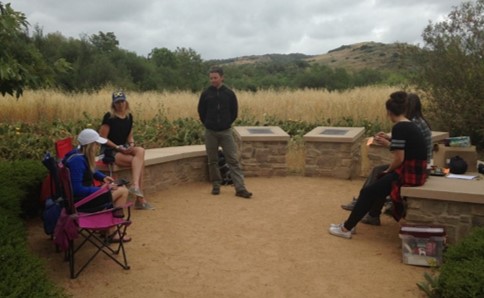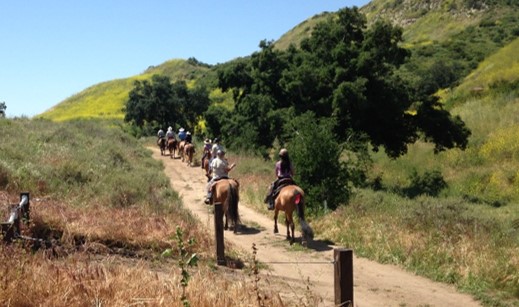Recreation Management and Human Valuation- the Fusion of Social and Ecological Sciences
Managers of urban-proximate wildland settings must often strike a careful balance with providing nature-based recreation experiences with the maintenance of ecological integrity. With over 3 million residents within a 30-minute drive of the natural areas of central and coastal Orange County, the demand for recreation experiences is ever present, and increasing. Equally important is the increasing need and desire for the conservation of natural resources. Resource management planning and implementation strategies in natural areas are often more successful when informed by interdisciplinary research that combines both ecological and social science approaches in a location specific manner. We have partnered with national leaders in the field of recreation ecology from Utah State University and Oregon State University to implement a multi-year project designed to address ecological aspects, human benefits and values, and contemporary management approaches tied to recreation within the region. Fourteen management units within the Nature Reserve of Orange County are considered a high priority for assessment and monitoring of recreation use and associated management uses. The project will employ both continuous assessment and sampling approaches to establish baseline conditions. Work is to include field assessment of the location and condition of trails, sites, and other areas of visitor use, determination of the spatial distribution of use, and assessment of visitor attributes and preferences, demographics, motivations, values and judgements of resource and social conditions.
Work will be conducted in two distinct phases. The first phase is three years in duration, beginning in Spring 2017, with social and biophysical field sampling. The initial findings are summarized in the 2019 progress report.
Recreation Ecology Workshop Presentation, June 8, 2022
Using a novel, mobile device data analysis, the team summarized visitation in parks within the Reserve.
Monz, C., Creany, N., Nesbitt, J., & Mitrovich, M. 2020. Mobile device data analysis to determine the demographics of park visitors. Journal of Park
and Recreation Administration. doi:10.18666/JPRA-2020-10541
For more information about the Recreation Management Program, contact Danny Fry (dfry@occonservation.org), or Dr. Chris Monz, Utah State University (chris.monz@usu.edu).
Other recreation-based reports for projects conducted on the Reserve-
California Fish and Wildlife Journal published a special issue on recreation. In the issue, Mitrovich et al. (pg. 11-28) provided an overview of mechanisms available to implement conservation and issues attributed to outdoor recreation when managing for wildlife and natural resources.
In the journal PLoS One, Patten et al. reviewed wildlife camera trap data in the central Reserve to investigate effects of human disturbance on diel of mammal populations, with implications for predetor-prey relationships.



